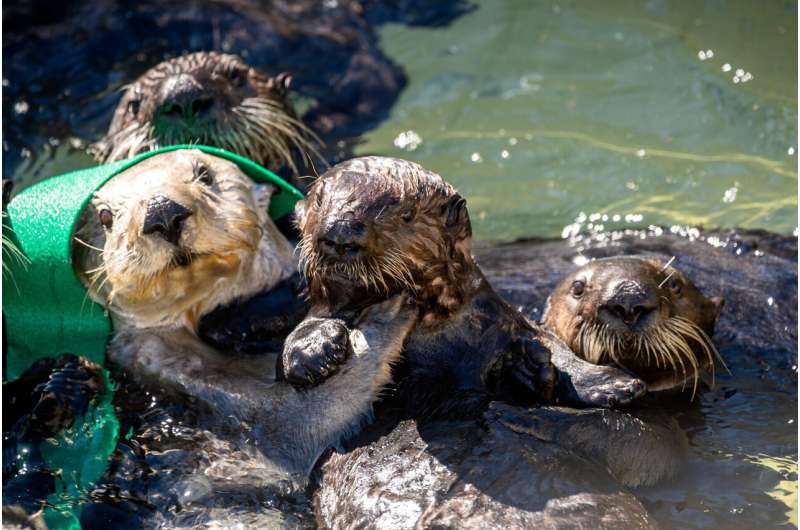
The Monterey Bay Aquarium’s sea otter surrogacy rehabilitation and release program pairs non-releasable female adults with orphaned pups in order to prepare the pups for reintroduction to the wild. Credit: Monterey Bay Aquarium
Monterey Bay Aquarium provides insights on the best practices for releasing orphaned southern sea otter pups to the wild in a new study. The study affirms the effectiveness of the Aquarium’s innovative sea otter surrogate-rearing methods, and finds the primary factors affecting individual sea otters’ abilities to reacclimate to the wild occurred after release.
Published today in the journal Biological Conservation, the paper, “Advancing Surrogate-rearing Methods to Enhance Southern Sea Otter Recovery,” examines the Aquarium’s surrogacy rehabilitation and release program and identifies key components that contribute most to a sea otter’s success upon release.
Monterey Bay Aquarium developed and pioneered the sea otter surrogacy program, which pairs young otter orphans with non-releasable female adult otters who bond with and care for the pups as their own. Aquarium researchers initiated the study to optimize the program’s methods and contribution to the recovery of this threatened species.
“These findings describe everyday life-threatening challenges experienced by sea otter pups,and help us identify optimal conditions for returning orphaned otters to the wild, where they may benefit population and ecosystem recovery,” said lead author Teri Nicholson, Senior Research Biologist for Monterey Bay Aquarium’s Sea Otter Program. “Because of our surrogate females’ strong nurturing behavior, three-quarters of the orphaned pups in our program reacclimate to the wild after release. What we are learning from this study will increase this success.”
Nicholson and her colleagues examined 20 years of surrogate-rearing methods for 64 sea otter pups that stranded along the California coastline and were subsequently released as juveniles. The team tracked 34 key rehabilitation and release components to determine what modifications would contribute most to improving successful outcomes in the wild. These results will inform decisions about when and where sea otters may be released within the species’ historical range to maximize their chances for survival.
“By sharing more details about sea otters within our program, and our common challenges, we hope to inspire stronger connections with these wildlife populations and stewardship of our shared ocean environment,” Nicholson said.
2023-03-19 07:00:03
Source from phys.org
